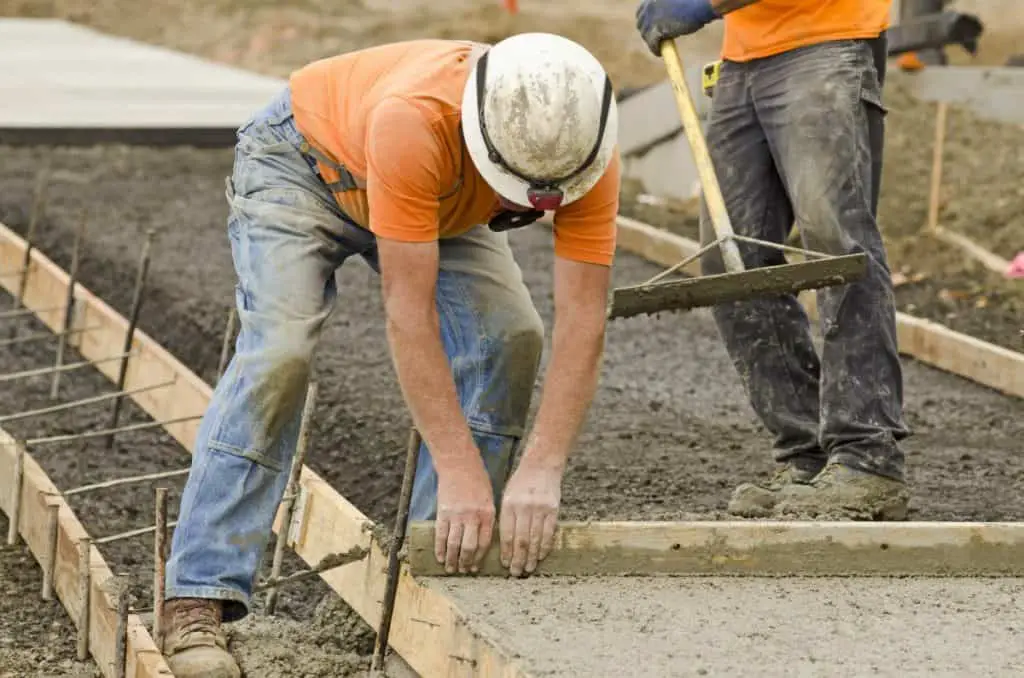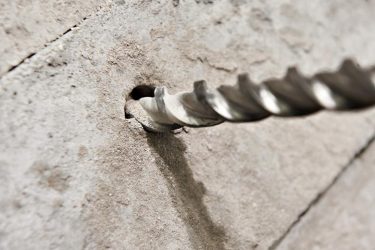Concrete forms can be pretty unappealing, and it’s certainly understandable to want to remove them as quickly as possible. We will go over how soon they can be removed safely so you can put your freshly laid concrete on display.
Most concrete forms can be removed after 24-48 hours. However, for more intense builds, it may take up to seven days before the forms can be safely taken taken off. Plan ahead, as removing forms early can cause cracking, sagging, and structural instability.
While many forms are safe to remove after only a day or two, many others are not. For larger builds and projects that are suspended on supports, it can take a lot longer for the concrete to be dry enough for stripping the form to be safe.

| Type of Form | Time to Dry |
| Walls, Columns, Vertical Supports | 24-48 hours |
| Slabs | 3-4 days |
| Soffits | 7 days |
| Props supporting slabs under 15 feet | 14 days |
| Props supporting arches or beams over 20 feet | 21 days |
But why wait for so long? What happens if I take off the forms early?
Table of Contents
What Happens If I Remove The Forms Early?
Not allowing the concrete time to cure before removing supports can be very dangerous depending on what you’re trying to build. Especially if the concrete is eventually meant to bear an architectural load, it can have far-reaching adverse consequences.
- Cracking: When concrete is still curing it’s much more likely to crack than when it’s dry. It’s fairly common to see cracks in concrete that have had its form removed too early, as the weight of the concrete pushes down on itself before the structure is ready to bear it
- Slumping: While concrete is drying, it can still act somewhat similarly to a liquid. It may run down towards the earth creating a bulge, or it may bend to one side or varying degrees.
- Collapse: Concrete is made mostly of sand and water. Before it dries, it’s like a sandcastle in that it can easily collapse in on itself. If any of these things happen to your pour, it’s probably a disaster. If it collapses, the heavy concrete can do a lot of damage to whatever else is situated around or on top of it. This is definitely a worst-case scenario.
All this can be especially dangerous if weather conditions are already bad for the drying concrete.
Can Weather Conditions Affect The Time It Takes For Concrete To Dry?
When concrete gets to be less than fifty degrees Fahrenheit, it becomes increasingly likely that it will freeze. While concrete is frozen, it will not continue to dry. In this situation, you will have to pay careful attention to the temperature and be sure not to count the time the concrete spends in the cold when deciding to remove the forms.
It is especially important in cold weather to keep the forms on for long enough since the cold can exasperate any problems the concrete has after the forms are removed.
Rain can also pose a danger to drying concrete, although it is really only a problem for the first two days or so. If it looks like it’s going to rain during that time, be sure to cover your concrete with a tarp as soon as you can. However, if it starts raining when your concrete has already had a day or two to dry, you should be safe to ignore it as long as it isn’t too cold.
While hot weather can decrease the time it takes for concrete to dry, it’s probably a good idea to wait the full time anyways just to be safe. The factors at play that change the rate at which concrete dries in the heat are very complicated. If you expect it to be extremely hot while your concrete is drying, you should talk to a concrete expert in your area about precautions to take in common local weather conditions.
What If My Build Is Really Big?
Of course, more concrete is going to take longer to dry. Whether your concrete is suspended above the ground or not can also affect the amount of time that elapses before it’s safe to remove the forms. For the most part, as long as your concrete isn’t unusually thick it should be alright for you to follow the chart from above in this article when it comes to construction.
How Long Does It Take For Concrete To Dry?
Concrete should be dry enough to walk on after 24-48 hours. Depending on what kinds of supports you are using, this may not be early enough to remove the forms. It can be dry enough for vehicles to drive over after about a week. For most projects that aren’t suspended above the ground, this should be long enough that the forms can be removed.
However, it normally takes about 28 days for concrete to be completely cured. At this point, all forms should be removed and your concrete structure can be considered finished.
Can’t I Just Keep The Forms On Forever?
Technically you can. In practice though, not only are the forms quite unappealing, but they can also get in the way of further construction work. A lot of companies also like to reuse their forms if they can, and this is somewhat impossible if they’re never removed. There isn’t much point in making a concrete structure if you’re just going to leave the forms on. At that point, you might as well be building the structure out of wood.

You will most likely want to remove the forms from your concrete build. It’s a vital step in many construction projects and it signifies the completion of your concrete structure. As long as you’ve given your concrete the time it needs to set, you can feel comfortable knowing that your concrete is finished and ready to make itself useful!



